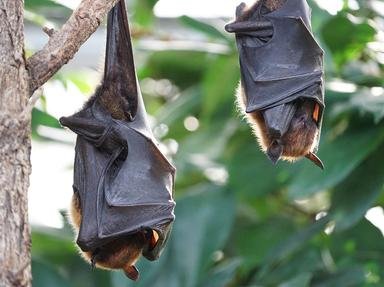Quiz Answer Key and Fun Facts
1. Bat with the largest wingspan
2. From the Americas, the fastest flying mammal
3. Roosts inside a pitcher plant for warmth?
4. Nasal heat sensors and anti-coagulant saliva
5. Smallest species of bat
6. Specialised fishing bat with distinctive face
7. Evolved to drink nectar, the 'tequila' bat
8. Eater of deathstalker scorpions
9. Pale-coloured predator of vertebrates
10. Shaped for mating calls
Source: Author
suomy
This quiz was reviewed by FunTrivia editor
rossian before going online.
Any errors found in FunTrivia content are routinely corrected through our feedback system.
